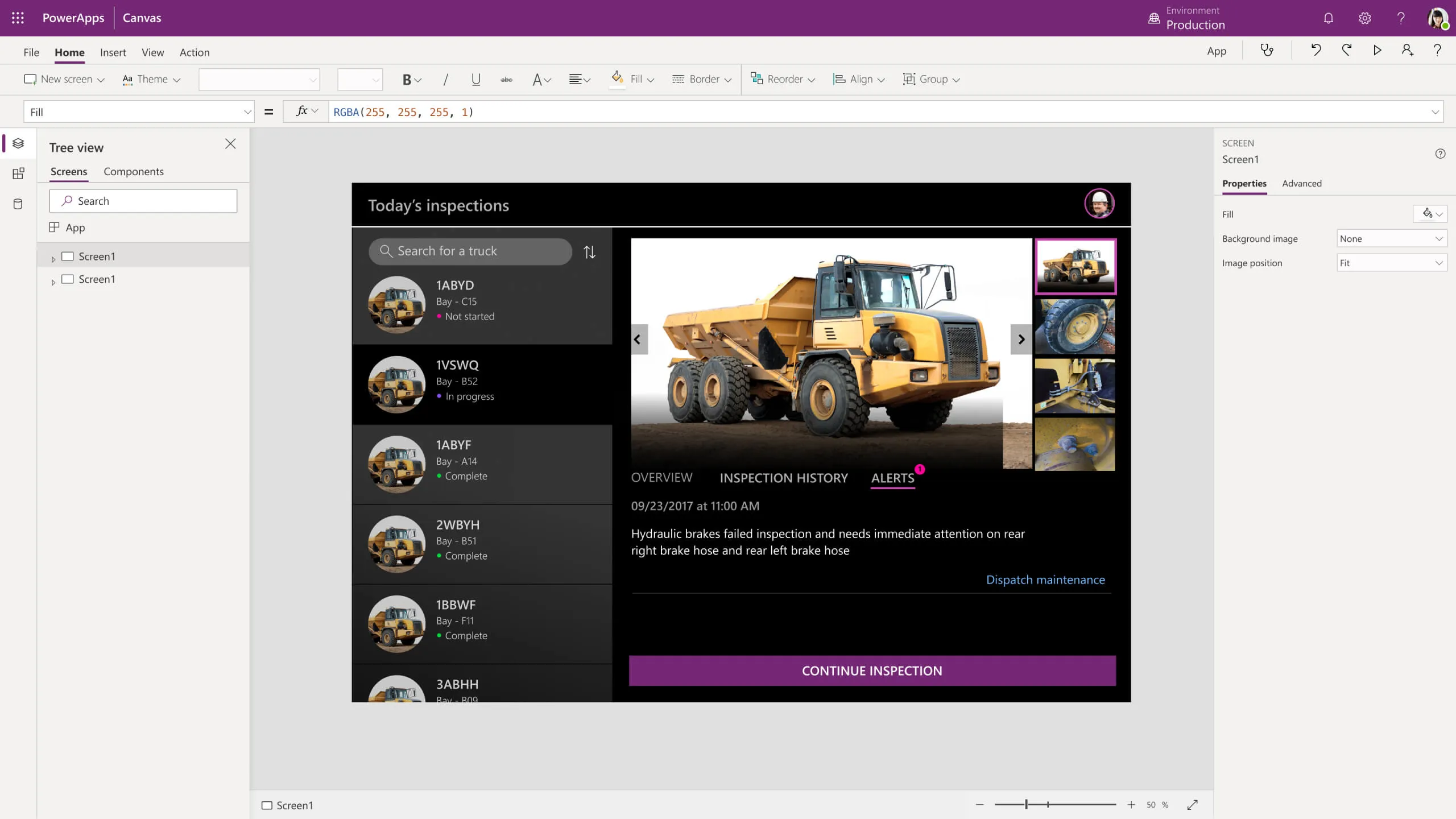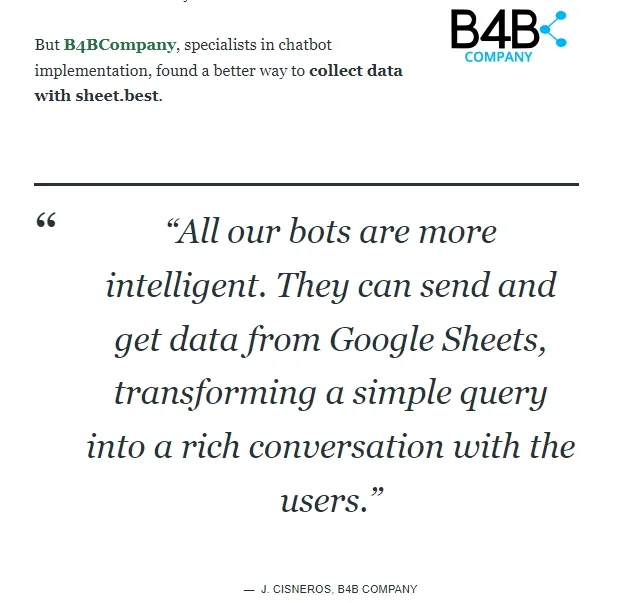AppSheet vs Power Apps vs Sheet Best: What’s the Simplest Spreadsheet-to-App Tool?

Often, the best way to find an app that meets all your needs and requirements is to build your own. At least you’ll get all the features you need (without the bloat of those you don’t).
Now, building your own app is a massive benefit, but there is a problem. If you want to create your own app, you either have to develop it, one line of code after another, or use a no-code/low-code platform.
You’ve likely heard of Google’s AppSheet already. Maybe you’re even familiar with Microsoft’s Power Apps. But are those two the only options you have?
Today, we’ll compare AppSheet and Power Apps to an exciting alternative to help you find the perfect no-code platform.
Let’s take a look!
Breakdown: AppSheet, Power Apps, and Sheet Best compared
| Features & flexibility | Use case | Platform support | Pricing | |
| AppSheet | Build mobile & web apps from your data sources. Integrates well with different ecosystems. | Best for startups and no-code beginners. | iOS, Android, web app. | Starting at $5/user/month. |
| Power Apps | Key features for app development & process automation, but clunky interface. Lacks customization options. | Best for enterprises running their operations on Office 365. | iOS, Android, web app. | Starting at $5/user/month. (Higher costs as you scale and build more apps.) |
| Sheet Best | Turn your spreadsheet into a REST API. Sheet Best provides the back end, so you can choose any front-end tool you’d like. | Companies of all sizes who want to automate tasks and build apps quickly from their Sheets or Excel. | Connect your API to anything. | Free plan available. Paid starts from $9.99/month. No fees for additional users. |
First: No-Code Platform Considerations
You Need Cross-Platform Support
Business apps are no longer used only on the desktop between bouts of watercooler chit-chat. These days, we switch from desktops to laptops across our smartphones and tablets.
And don’t get us started on operating systems!
Your no-code platform of choice needs to offer cross-platform support, so you can use your app easily across all your devices.
Ease of Use
The idea behind no-code or low-code platforms is to enable anyone to build apps. So, another vital consideration when choosing a platform is ease of use. Even if you’re a developer, you don’t want to spend more time building a no-code app than necessary.
Flexibility
Ultimately, you need to be able to build an app specifically suited to your unique needs and requirements. Your platform should support you in implementing all the features you need.
Pricing
Consider your budget and the bang you’re getting for your buck. Check if the platform offers a free basic version, a free trial, or a demo before committing to a subscription.
Now, let’s look at our three no-code contenders!
AppSheet vs Power Apps vs Sheet Best
1. AppSheet
AppSheet is Google’s brainchild, launched after App Maker retired in 2021. You can build both mobile and desktop apps and automate manual tasks.
Its features include:
- Data collection tools
- Rich customization options
- User management
AppSheet also integrates with Google’s Workspace apps and other platforms, including Dropbox, Office 365, and more.
AppSheet wins in the battle against Power Apps because of its intuitive and customizable interface. If you’re a beginner to no-code development, it’ll be much easier to build with AppSheet than Power Apps.
AppSheet pricing starts at $5 per user per month for the Starter plan. You’ll get access to the basic app and automation features. If you need advanced features, enhanced security, and support, go with the Core plan at $10/user/month.
2. Power Apps

Like AppSheet, Microsoft’s response to no-code development, Power Apps, aims to help you build business apps quickly and easily. You’ll get a gallery of pre-built templates, a drag & drop editor, and quick deployment processes.
However, Power Apps is not without its drawbacks. Microsoft has a specific approach to organizing features, which can get quite intimidating for the regular user.
Unlike AppSheet, Power Apps doesn’t give you much room for user interface customization. It is function over form with Power Apps!
Power Apps’ pricing isn’t ideal. You can choose between a per-app plan or a per-user plan. The per-app plan will set you back $5/user/app/month.
If you opt for the per-user plan and run unlimited apps per user, you’ll pay $20/user/month.
There’s also a pay-as-you-go plan available.
3. Sheet Best

Sheet Best takes an entirely different approach than AppSheet or Power Apps. Instead of pulling you into a different interface, it lets you work with what you have: spreadsheets.
Take your Microsoft Excel, Google Sheets, or .csv files, and convert them into a REST API!
If you want to get off the ground quickly, Sheet Best enables you to create an API easily. You won’t have to worry about a back end or databases. From there, it’s straight to integration and automation; simply plug your API anywhere:
- Mobile apps
- Content management systems
- Chatbot response databases
- Analytics dashboards
And more!
Compared to Power Apps and AppSheet, Sheet Best is the lightweight alternative that packs a punch.
Sheet Best provides the back end of your application, so you can choose any front end you desire. Want to use a front-end no-code builder to create a beautiful and intuitive design? No problem!
You’ll get increased flexibility to tailor your app to your exact needs and requirements, with a design cherry on top.
Start light, and then scale up, keeping your information centered in your spreadsheet headquarters.

Sheet Best offers competitive pricing. You can get started for free (1 connection and up to 100 requests per month), or choose one of the paid plans:
- Tiny - $9.99/month for up to 2 APIs and 15.000 requests per month
- Personal - $19.99/month for up to 8 connections, 50.000 requests per month, and customer support
- Professional - $39.99/month for up to 15 connections, 250k requests per month, and additional features
- Premium - $69.99/month for up to 35 connections, 500k requests per month, and additional features
- Production - $149.99 for up to 50 connections, 1M requests per month, advanced API queries, and more!
AppSheet vs Power Apps vs Sheet Best: Use Cases
In the battle of Power Apps vs AppSheet, figuring out your use case is key. After all, you want to make sure you’re choosing the platform that’s best for your needs, right?
So, let’s start by breaking down some common use cases for each platform. First up, AppSheet.
AppSheet Use Cases
As we mentioned, Google’s AppSheet platform is ideal for beginners who are just getting started with building apps.
Here are some examples of what you can do with AppSheet:
- Building inventory management apps for small businesses
- Creating mobile forms for data collection in the field
- Developing customer relationship management (CRM) apps for sales teams
- Building employee onboarding and training apps for HR departments
- Creating project management apps for teams to track tasks and deadlines
And so much more– overall, AppSheet is a versatile tool that can be used to build a variety of different apps for different industries and purposes.
Power Apps Use Cases
As an AppSheet alternative, Microsoft’s Power Apps is a bit more niche. It’s designed to connect and share data from tools already in the Microsoft ecosystem like Azure, Access, and Excel. This means it’s an excellent choice for businesses that rely heavily on Microsoft products. However, with PowerApps, Google Sheets is an option if you’re using it.
Here are some use cases where Power Apps can shine:
- Employee onboarding: Create a custom app to streamline the employee onboarding process, using data from Office 365, SharePoint, and other Microsoft tools.
- Project management: Build a custom project management tool that integrates with Microsoft Project and other project management tools.
- Inventory management: Track inventory levels and orders, integrating with data from Excel spreadsheets or Dynamics 365.
- Customer relationship management (CRM): Power Apps can be used to build a custom CRM system that integrates with Dynamics 365, Outlook, and other Microsoft tools.
Keep in mind that these are just a few examples – there are many other use cases where Power Apps could be a good fit depending on your specific needs.
Sheet Best Use Cases
Beyond the PowerApps vs AppSheet debate, Sheet Best is a versatile tool that lets you quickly automate a variety of tasks and build an app without breaking a sweat. Whether you use Sheets or Excel, it doesn’t matter.
Here are some of the ways you can use Sheet Best:
- Lead and customer tracking: Say goodbye to manually managing leads and customers. Easily automate your CRM and keep track of everything in one place.
- Inventory management: Keep your inventory under control and easily track your stock levels, reorder points, and more.
- Invoicing and billing: Tired of creating invoices manually? Automate your invoicing process and get paid/pay out faster.
- Customer support: You don’t need a huge team to provide amazing customer service. From chatbots to customer onboarding, Sheet Best can do it all!
- Data entry: Do you have a lot of data to enter manually? Forget that and create forms that automatically populate your spreadsheet and save you a ton of time.
- Budgeting and forecasting: Combine your financial spreadsheets and data analysis tools to find trends and new opportunities.
- Content management: Easily manage blog posts, social media content, and more.
- Scheduling Management: Use Sheet Best with your appointment setting app to automate your schedules.
- HR management: Streamline your HR processes and keep everything in one place.
These are just a few use cases for Sheet Best– if it’s in a spreadsheet, you can turn it into a powerful REST API. The only limit is your imagination!
Power Apps vs Google AppSheet vs Sheet Best: Choosing What’s Right For Your Business
OK, It can be tough to decide between Microsoft Power Apps vs Google AppSheet or even the Sheet Best API.
But don’t worry, we’re here to help you figure it out. Here are some considerations you need to make before pulling the trigger on one platform or the other:
Understand Your Business Needs
Before jumping into any tool, take a step back and understand what your business really needs. Ask yourself questions like:
- What are the main problems I’m trying to solve?
- Who are the primary users of the app?
- What level of customization do I need?
- Do I have the resources and technical knowledge to build the app myself?
- What is my budget?
Answering these questions will help you narrow down your options and make the right choice.
The Learning Curve
While it’s intuitive and easy to get started with AppSheet, PowerApps has a bit of a learning curve that can be off-putting to complete beginners.
Regardless, you should take a look at your team’s skill level and resources and ask yourself:
- How much time can we dedicate to learning a new tool?
- What level of complexity are we comfortable with?
- Are there team members who already have experience with the platform?
- Do we have the resources to hire someone who is already experienced with either tool?
- What kind of support is available for the one we choose?
Security
Data security is another crucial aspect to look at when deciding between AppSheet vs PowerApps– especially if you’re handling sensitive data like customer details or proprietary information. So, take a good look at the security features available on each platform and make sure they fit your needs. Don’t take any chances with your business’s data!
Integrations
When it comes to integrations, Sheet Best is the clear winner in the Google AppSheet vs PowerApps competition. With Sheet Best, you can easily connect your spreadsheets to a wide variety of tools and services, including websites, applications, CRMs, dashboards, and more.
In fact, if it has an API, it can be used with Sheet Best. This makes it an extremely versatile solution for businesses that need to work with multiple platforms and services.
In comparison, PowerApps and Google AppSheet are more limited in terms of integrations, with a focus on connecting to Microsoft and Google services respectively. While they do offer some integrations with other tools and services, they may not be as flexible or comprehensive as what Sheet Best can offer.
The Verdict: AppSheet vs. Power Apps vs. Sheet Best
Ultimately, the decision depends on your needs. If your company is already in the Google or Microsoft ecosystems, you may gravitate towards their solutions naturally.
But don’t be afraid to break out of the box to get a powerful solution that doesn’t just work wonders for your productivity and budget.
If you’re ready to build an app that’s entirely to your liking - no compromises - choose Sheet Best.
Take the first step on your no-code journey today!